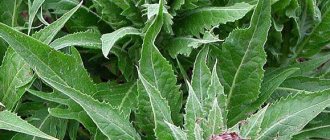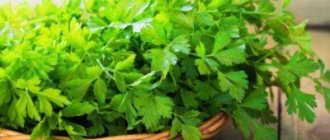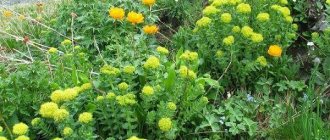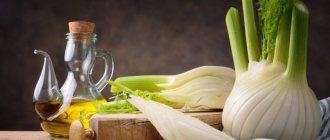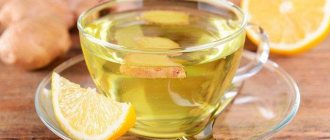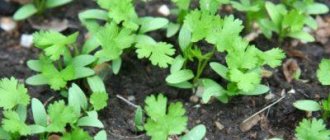Rhodiola rosea (pink, golden root) is a herbaceous perennial plant from the Crassulaceae family. It has a distinctive feature: the root and rhizomes are the color of bronze or old gilding with a noticeable pearlescent sheen, due to which it received its second “precious” name. The plant is included in the Red Book of the Russian Federation.
It is found in regions with temperate and cold climates, including Great Britain, North America and Ireland, grows well in alpine mountain meadows (in the Pyrenees, Alps, Carpathians), found in Kazakhstan, grown in China, Bulgaria, India. In the Russian Federation it is found in Altai and the Urals, in the mountainous regions of the Far East, Eastern and Western Siberia, in the polar regions of Yakutia, on the coasts of the Barents and White Seas. The plant is undemanding to light and heat, but needs plenty of moisture. It grows on rocks and rocky outcrops, in flat tundra, on the banks of mountain rivers and streams.
It has long been used in folk and official medicine as an effective adaptogen that increases resistance to adverse environmental factors, as well as a stimulant of the central nervous system. Part of the group of adaptogens, it combines and competes with eleutherococcus and ginseng.
Morphological description
The rhizome is horizontal, powerful, covered with a brown (bronze) cork, and has thin adventitious roots. When broken, the root is white, has a bitter-astringent taste, and has a special aroma, similar to the smell of a rose.
Most often, the plant has several (10-15 pieces) non-branched erect stems, 10-40 cm high, less often there is only one stem. The leaves are alternate, sit on stems, have an oblong-ovate, elliptical or pointed shape with a whole or serrate-toothed upper part.
Flowering occurs in June-July, fruits reach maturity in July-August. The inflorescence is multi-flowered and has a corymbose shape. The flowers are yellow, unisexual, four-, less often five-membered. The fruits are erect, multi-leafed, green.
Propagated both by seeds and vegetatively.
Collection, preparation and reproduction
The root of Rhodiola rosea is harvested for future use (the plant is 3-4 years old). This is done between the end of July and September. The roots are dug up, thoroughly washed to remove soil particles in cool water, and cleaned of brown plugs and rotten, dry areas. Cut the rhizome into pieces, each 10 cm long, and dry them at 50 degrees in a dryer.
The finished raw material has a pinkish or white color when broken. If the root is brown in color at the break, it is unsuitable for use because it loses its beneficial properties. Store dry raw materials in canvas bags in a dark place. Shelf life – 3 years.
Most often, the plant is propagated by seeds: planted in late autumn or winter in a box with nutritious soil, providing good ventilation (expanded clay is placed on the bottom). The soil is pre-moistened with a weak solution of potassium permanganate and compacted a little. The seeds are evenly distributed over the surface and lightly pressed, covered with soil (2 mm layer), covered with film and placed on the balcony. In March, the box is moved to a warm, illuminated place, and within a couple of days shoots will appear. They can be replanted when two true leaves appear.
You can propagate a plant (which is at least 2 years old) by dividing the rhizomes into 2 parts, which are planted in prepared holes with humus; compost is also laid on top, leaving renewal buds on the surface.
Chemical composition
The root of the plant contains more than 140 useful elements, which determine the complex positive effect.
- Phenols and their derivatives: tyrosol, salidroside. Strengthen the circulatory system, protect blood vessels from narrowing. Prevents cholesterol oxidation;
- Carbohydrates: glucose, fructose, sedoheptulose, sucrose. Participate in energy metabolism;
- Organic acids: oxalic (stimulates gastric secretion and intestinal function),
- apple (normalizes digestion, improves the condition of blood vessels, improves vision and is involved in metabolism),
- amber (neutralizes free radicals, reduces uric acid levels, restores joint mobility, stimulates insulin production),
- lemon (increases appetite, stimulates cell renewal, activates the immune system);
Straight chain aliphatic alcohols and monoterpene hydrocarbons were found in the essential oil. The composition of the essential oil varies depending on where the plant grows.
The aboveground part of the plant is saturated with organic acids (malic, citric, oxalic, succinic), phenols and their derivatives, phenolcarboxylic acids (gallic, caffeic), coumarins, tannins, and flavonoids.
Beneficial features
Golden root (rhodiola) is characterized by many beneficial properties:
- is a powerful antioxidant and adaptogen;
- protects the body from the development of cancer and prevents tumor metastasis;
- increases blood pressure;
- improves heart function;
- fights pathogenic microorganisms;
- has an anti-inflammatory effect;
- promotes bile secretion;
- stops bleeding;
- restores the body after overwork, tones well;
- has a general strengthening effect and increases the body’s resistance to the influence of unfavorable environmental factors;
- has a neuroprotective effect;
- stimulates the central nervous system;
- maintains the energy potential of the brain at a high level;
- improves cognitive functions;
- accelerates the course of oxidative processes;
- accelerates wound healing.
Contraindications for use, possible harm
Overall, goldenseal is considered safe, with herbal medicines rarely causing side effects.
But in some cases, taking pink radiola is strictly contraindicated:
- If you have hypertension/hypertension, you should avoid using infusions, tea or decoction of golden root, because the plant increases the intensity of hematopoiesis, which negatively affects the narrowing of blood vessels. A patient who ignores this contraindication may experience vascular tension, severe pain in the head, and heaviness in the chest. Usually, cardiologists categorically prohibit patients from drinking golden root if they have heart or vascular diseases.
- If you have eczema, psoriasis, or atopic dermatitis, you will need to consult a doctor about using golden root. With these diagnoses, the patient may experience an exacerbation of dermatosis.
- For depression accompanied by anxiety, overexcitation, and insomnia, you should avoid using the plant. It is used to treat neurotic disorders associated with decreased energy and loss of strength.
In addition, radiola rosea, like any other medicine, can cause an allergic reaction, so it is recommended to start using decoctions with a minimum dose.
If such symptoms occur during treatment, you should stop taking decoctions, infusions, tea or golden root extract:
- Runny nose.
- Shortness of breath.
- Skin rash.
- Rush of blood/heat to the face, chest.
- Tachycardia.
- Stitching/pulling pain in the chest.
When deciding to give golden root medicine to children, you should definitely get approval from your local pediatrician. This is due to the fact that the doctor must be aware of all medications the child is taking, even if they are of herbal origin. Pregnant women are not prohibited from treatment with radiola, but they will need to inform their doctor about this so that in case of an inadequate reaction of the body to the plant, he can quickly remove the side effects.
Pink radiola or golden root is a plant that is useful for every person, provided that it has no contraindications for use. However, treatment, even with herbal decoctions, should be carried out under the supervision of the attending physician, because exceeding the dosage or the individual characteristics of the body can provoke an allergy or rejection of the medicine by the body.
Article on the topic: Common privet - beneficial properties, description
Scientific research
Scientific research began in the 60s of the 20th century. In 1961, an expedition led by G.V. Krylov was carried out, during which scientists managed to find the plant in the taiga of the Altai Mountains. Based on research results, the plant was introduced into scientific medicine and began to be used in the form of a liquid extract with adaptogenic and stimulating properties.
Numerous studies have been conducted to study the effect of the plant on the central nervous system. Plant preparations change the bioelectrical activity of the brain and improve cognitive functions: by increasing resistance to stress factors, memory and the ability to remember information improves.
The positive effect of plant preparations has been reported to eliminate the side effects of psychotropic therapy for schizophrenia.
A number of studies have shown that roseola rosea can improve physical performance. An experiment conducted on animals (white rats) recorded a decrease in the rate of glycolysis, the amount of lactic acid in the muscles, the preservation of a high level of phospholipids in the muscles and liver, as well as blood sugar after 2 hours of swimming in individuals receiving the plant preparation.
The possibility of using plant preparations as hepatoprotectors is also being considered. The effectiveness of use as a therapeutic and prophylactic agent for liver damage induced by organophosphorus compounds has been proven in animals.
Application
Rhodiola rosea is a powerful adaptogen that has a visible effect after the first use of the drug! But you can’t take plant preparations every day without reason. Constant stimulation of the body, even with herbal preparations, can lead to an effect opposite to the expected one.
Rhodiola is used for many diseases and pathological conditions, and is characterized by a whole range of pharmacological properties. The most common indications for the use of plant preparations:
- poor appetite;
- metabolic disorders;
- physical and mental fatigue;
- VSD;
- neuroses;
- asthenic condition after long-term illnesses;
- inflammatory processes;
- allergic reactions;
- radiation injuries (acute and chronic);
- reduced visual acuity;
- poor hearing;
- pulmonary tuberculosis;
- anemia;
- oncological diseases;
- bone fracture;
- menorrhagia;
- dysmenorrhea;
- amenorrhea primary and secondary;
- gynecological diseases (adnexitis, polycystic ovary syndrome, fibrocystic mastopathy);
- early menopause;
- impotence;
- oligospermia;
- late puberty;
- toothache;
- headache;
- gout;
- diabetes;
- conjunctivitis;
- angina;
- pyorrhea;
- diarrhea;
- wounds, skin lesions, rashes, abscesses.
Golden root is often used for men and women: it helps with impotence and is indicated for many diseases of the female reproductive system. Plant preparations enhance the functioning of the sex glands, stimulate the ovaries and are widely used in the treatment of early menopause. The plant has a positive effect on potency, and its effectiveness is higher than that of ginseng root.
It has been proven that the plant enhances the effect of cytostatics that cause necrosis of cancer cells: the membrane, core and parts of the cell are destroyed, which leads to its death.
Golden root: benefits and contraindications
As an adaptogen and a strong stimulant, Radiola rosea is not inferior to ginseng. Its use is recommended for the following ailments:
- neuroses, insomnia, stress;
- hypotension, VSD, migraine;
- diabetes mellitus, thyroid dysfunction;
- for tissue regeneration after injuries and operations;
- most cancers;
- colds, flu, tuberculosis;
- impotence, oligospermia, prostatitis;
- menopause, polycystic disease, mastopathy, uterine bleeding.
We advise you to read: Japanese Sophora: medicinal properties and contraindications
Contraindications are based on the pronounced stimulating effect of the root. Its use may aggravate the following conditions:
- hypertension;
- fever;
- threat of miscarriage in pregnant women;
- frequent headaches;
- intolerance to components.
Important! During pregnancy and lactation, the use of pink radiola must be agreed upon with the supervising physician.
In cosmetology
This unique plant has also found its application in cosmetology. Golden root extract has a positive effect on aging, sensitive skin and improves its overall condition. The rich biologically active composition allows the use of plant extracts in various creams to give them stimulating and adaptogenic properties, slow down the aging process of the skin, and increase resistance to adverse environmental factors.
Cosmetic preparations with golden root:
- normalize metabolic processes in the skin;
- improve energy metabolism in cells;
- accelerate skin regeneration processes;
- minimizes transepidermal fluid loss;
- increase skin barrier functions;
- slow down the aging process;
- reduce the level of depression.
The most popular cosmetics with golden root: day cream for sensitive skin from “Natura Siberika”, face cream “Clean Line”, day cream “Granny Agafya’s Recipes”.
What are the benefits of golden root for the body?
Due to its positive effects on the human body, Rhodiola rosea is widely used in pharmacology and traditional medicine. Its effectiveness has been proven by many years of research. When used correctly, it has a restorative and adaptogenic effect on the body. In some cases, golden root can increase the effectiveness of the main treatment. In terms of its tonic effect, it can compete with eleutherococcus and ginseng.
The beneficial properties of Rhodiola rosea also include:
- increasing the body's endurance;
- normalization of the menstrual cycle;
- strengthening the immune system;
- improving memory and concentration;
- restoration of the functioning of the heart muscle and coronary arteries;
- appetite stimulation;
- improvement of blood composition and lymph flow;
- calming effect on the body;
- stabilization of the functions of the endocrine system.
Rhodiola rosea lotions are excellent for conjunctivitis. A herbal decoction can be used to rinse the mouth for periodontal disease. In cosmetology, the remedy is common in improving hair structure. It is used to prevent hair loss and protect against color dullness.
Rhodiola rosea is often used in the fight against depressive disorders. It increases brain activity and reduces cortisol levels, which is considered a stress hormone. At the same time, the plant does not have a sedative effect, but, on the contrary, replenishes energy reserves. The advantage of golden root is its low level of toxicity, which reduces the likelihood of side effects.
Rhodiola rosea is in great demand among athletes. It speeds up the muscle recovery process after intense training. In addition, the components in its composition increase endurance and activate metabolism. This is especially true when losing weight.
We recommend reading: Zopnik tuberiferous (iron grass): medicinal properties, contraindications, use for women, photos
Medicinal properties of golden root for men
Today, Rhodiola rosea is one of the most effective remedies for treating diseases of the male reproductive system. Its active substances improve the quality of seminal fluid and stimulate the functioning of the gonads. Golden root helps cope with oligospermia and erectile dysfunction.
It is also recommended for use for the following problems:
- depressive disorders;
- decreased libido;
- sleep disturbance and fatigue;
- physical fatigue.
There is an opinion that regular use of golden root extends life by 15-20 years
Medicinal properties of golden root for women
Rhodiola rosea is able to restore the functioning of all major life support systems. Women often use it to normalize hormonal levels. Phytoestrogens, which are part of the golden root, have a targeted effect on reproduction problems. Decoctions and tinctures prepared from the plant relieve severe menstrual pain and eliminate PMS symptoms. The abundance of minerals in the composition ensures the preservation of youth even after menopause. This is due to the stimulation of elastin and collagen production.
Advice! Rhodiola rosea has a stimulating effect on testosterone production.
Pharmaceutical preparations with Rhodiola rosea
Golden root has also found application in official medicine - many drugs and dietary supplements are actively used in the treatment of a number of diseases. Let's look at the most popular ones.
Rhodiola Liquid ExtractThe drug is indicated for increased fatigue, neurocirculatory dystonia of the hypotonic type, neurasthenic conditions, during the period of recovery from severe somatic and infectious pathologies, during periods of mental and physical stress, and also as a means for the prevention of acute respiratory viral infections during periods of epidemics. |
Rhodiola +A dietary supplement recommended for raising tone, increasing performance (mental and physical), and strengthening resistance to adverse environmental factors. |
Rhodiola rosea vis extract in capsules
|
Root
|
The plant is also included in various herbal teas and mixtures.
Can golden root be bought at a pharmacy?
Fresh golden root cannot be found in pharmacies. It is sold as a tincture with the addition of other herbs and is marketed as an adaptogen and immune stimulant.
We advise you to read: Black elderberry: medicinal properties and contraindications
In some herbal pharmacies you can buy tea or dried root of radiola rosea, but it is not suitable for preparing an alcohol tincture.
Fresh plants can be purchased online. Many herbalists have goldenseal in their gardens. But buying blindly has its downsides - you may be deceived.
Traditional recipes with Rhodiola rosea
Traditional healers have long and successfully used plant preparations for many diseases. The duration of use is determined individually, but it is recommended to take no more than 5 days in a row, after which take a seven-day break.
Tincture of golden root with vodka for hypotension
- Take 50 gr. dry plant root, grind to a powdery consistency, pour in 2 glasses of vodka. Leave in the dark for 14 days, shake occasionally. Strain the finished tincture.
- Take 20-30 drops 3 times a day. 30 minutes before meals. You can start taking 5 drops and gradually increase the volume to the recommended amount.
Tincture of golden root for colds and heart weakness, nervous diseases and pathologies of the gastrointestinal tract
- Take 10 g. roots, chop and pour 1 cup of boiling water. Leave to brew for 4 hours and strain.
- Take half a glass 3 times a day. Externally used as an effective wound healing agent for treating wounds, cuts, and for rinsing the mouth during sore throat.
Decoction
- Improves the functioning of the heart and blood vessels, making them more resilient. Helps with gastrointestinal diseases, uterine bleeding, impotence, improves thyroid function and normalizes blood sugar levels. Eliminates headaches and toothaches. Can be used externally to wipe the skin.
- Take 20 gr. roots, chop and pour 500 ml of boiling water, keep on low heat for 10 minutes. Leave to steep until cool, then strain.
- Take 50 ml 3 times a day.
Tonic decoction
- It has a strong stimulating effect on the central nervous system, which surpasses the effect of black teas and coffee. Therefore, you should not take it every day, but only when necessary.
- Take 1 tsp. root (pre-crushed) and pour 1 liter of water, boil for 10 minutes. and leave for another 40 minutes. in a warm place.
- Take 2-3 glasses during the day (no later than 4 hours before going to bed), adding sugar or honey to the drink if desired.
Collection to strengthen immunity
- Take 20 grams. Rhodiola roots, rose hips and zamanika roots. Add 15 gr. hawthorn fruit, 15 gr. dry nettle, 10 gr. St. John's wort herb, mix. 1 tbsp. pour a glass of boiling water over the collection and place on low heat for 10 minutes. Leave to infuse for 4 hours, covered, and strain. Dilute the resulting volume with 200 ml of boiling water.
- Take 70 ml 3 times a day.
Tincture for anemia and diseases of the female reproductive system
- It also helps with age-related loss of strength, impotence, pulmonary tuberculosis, liver pathologies and diabetes.
- Take 100 gr. chopped roots and pour 400 ml of good vodka over them. Place in a dark place for 7 days.
- Take 30-40 drops 3 times a day. 30 minutes before meals.
Collection for colds and gastrointestinal disorders
- Take equal parts of Rhodiola rosea, bergenia, blackberry, strawberry, raspberry, black currant leaves, cinquefoil flowers, St. John's wort flowers and thyme, mix everything. Take 3 tbsp. dry collection and pour 1 liter of boiling water over them, leave for 60 minutes. Add honey or sugar to taste.
- Take 1-2 glasses per day.
Golden root - medicinal properties for women and uses
Rhodiola rosea preparations can help women with:
- menstrual irregularities;
- uterine atony;
- postpartum and other uterine bleeding;
- in the climatic period (climatic symptoms will be eliminated);
- will help cope with postpartum depression.
During climatic periods, it is recommended to use a decoction of golden root:
- Pour a tablespoon of raw material into one liter of boiling water.
- Strain after 12 hours.
- Take one hundred milliliters two or three times a day.
For bleeding and other conditions described above, use Rhodiola rosea tincture, which is prepared from 200 ml of vodka and 2 tablespoons of root. Before use, the tincture should steep for two or three weeks. It should be taken before noon two or three times, 15-20 drops each.
You will be interested to know: Common yarrow: medicinal properties, applications, photo of the plant
